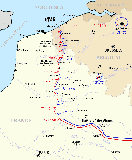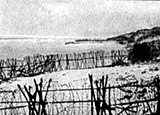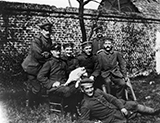Following the victory at the Battle of the Marne (September, 1914), the French and British optimistically pursued a defeated German army. As the Allies approached the Aisne River they found the Germans entrenched on the other side. Expecting to maintain their victorious momentum, the French attacked the Germans on September 12 and encountered their first resistance associated with trench warfare. The fighting experienced by the French at Aisne would be mirrored across the forming Western Front and come to define World War I.
The French attack was quickly routed by German firepower which was aided by their defensive trench positions upon the high ground. A German counterattack was repelled by the French who had also begun digging their defensive trenches. As quickly as they appeared, the two parallel trench lines began their infamous “race to the sea.”
Each army moved to outflank the other in a futile effort to extend their trench line beyond that of their enemy. All along Northeastern France and Western Belgium, battles raged through September into mid-October as British, French and German armies worked to extend their trenches beyond that of their enemy.
The “race to the sea” would culminate in the medieval Belgian town of Ypres. There, the British looked to secure English Channel ports, guaranteeing supply lines to their troops. Likewise, German commander, Erich von Falkenhayn, believed gaining control of Ypres would cut off British aid to the French, thus allowing the Germans to gain the upper hand.
On October 20, the Germans attacked while the British and French dug in to hold their defensive positions just outside of Ypres. The fighting raged on for weeks with the British taking massive casualties. Weakened by dwindling numbers and running low on ammunition, the British looked as if they might retreat, allowing the Germans to gain control of Ypres. The addition of forces from India bolstered the British lines and they were ultimately able to hold off the Germans.
In the end, Falkenhayn recognized the German defeat and ordered his troops to strengthen their trenches by heavily reinforcing them. This decision would hamper allied offensive movements for the remainder of the war. The British also lost nearly 90% of their regular army at the First Battle of Ypres. In desperate need to replenish, the British launched a massive conscription campaign, resulting in the largely green army that would face destruction at the Somme in 1916.
Ultimately, Germany’s failure at Ypres ended the “race to the sea” and it became all too clear that this war would not be over by Christmas, 1914 as leaders on both sides had predicted. The stage was now set for the gruesome four year stalemate that would come to redefine warfare and the 20th Century.
It is also noteworthy that Adolf Hitler, future dictator of Germany, experienced his first action at the First Battle of Ypres in October, 1914. Hitler’s company of 250 men was reduced to a mere 42 by the end of the battle. The German army, in general, encountered numerous casualties at First Ypres, which the Germans remember as the “Massacre of the Innocents” due to the large number of young soldiers killed.
-WD
Additional Photos
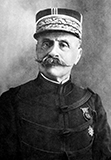 French Commander Foch |
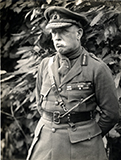 British General Sir John French |
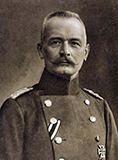 German Commander Von Falkenhayn |
Related Lesson Plans
Further Reading
- First World War.com: First Battle of the Ypres
- First World War.com: First Battle of the Ypres (alternate)
- This Day in History: First Battle of Ypre
- First Battle of Ypres
- First World War.com: Foch's Report
First Posted: 09/01/2014
